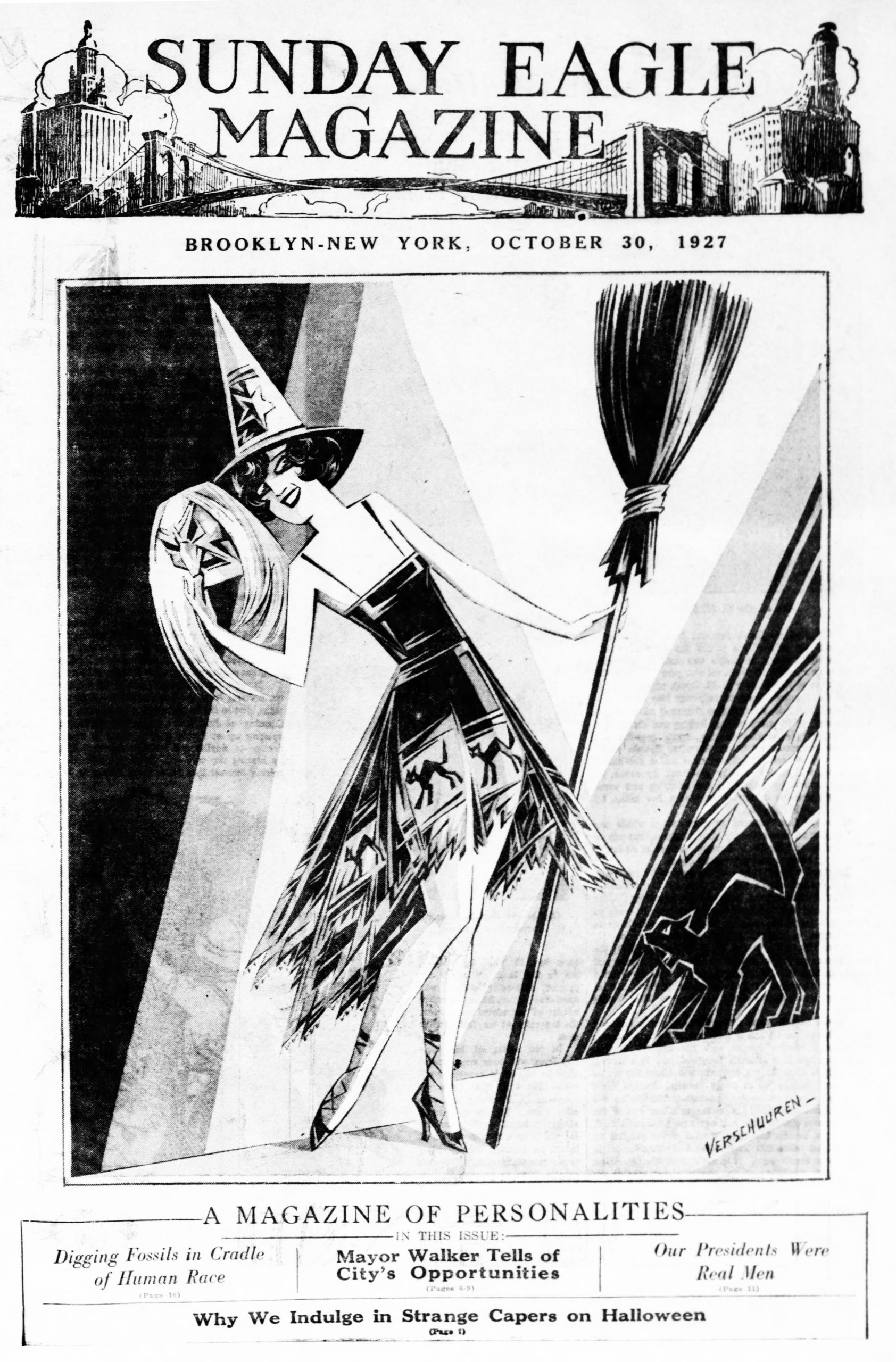October 30: ON THIS DAY in 1927, Why we indulge in strange capers on Halloween

ON THIS DAY IN 1852, the Brooklyn Daily Eagle reported, “Monday next is the first of November, and the evening previous is observed as a festival among the peasantry of most of the countries of Europe. It is also regarded as a time when spirits of another world are permitted to be abroad on the earth, and fairies, witches and other creations of popular fancy exercise a potent influence over the future destiny of mortals. The desire to pry into futurity, which is a strong element in human nature, has invested the last day of October with a supernatural character, as a time when people may, by the performance of certain rites and ceremonies, obtain a view of their future condition. These mysterious ceremonies, however, are principally confined to the discovery of what shall be the future matrimonial relations of young people, and of course that is a subject on which both sexes would be willing to exercise a little conjuration, provided it would lead to a knowledge of how their lot in this respect is to be cast. Little attention is paid to the occasion in this country, save in some of the New England States, where it is partially observed. It is becoming neglected, however, everywhere, and in the course of time will be entirely forgotten.”
***
ON THIS DAY IN 1927, the Eagle reported, “LONDON, Oct. 29 (UP) — The Russian explorer, Prof. Peter Kozloff, [according to] the Sunday Express, has solved darkest Asia’s greatest archeological mystery by the discovery of the tomb of Genghis Khan (Jenghiz Khan), Mongolian conqueror, 700 years after his death, near the ruins of the dead city of Khara-Khoto, in the Gobi Desert. Professor Kozloff has devoted 20 years in the search. He found the great Khan’s remains in a silver coffin resting upon the crowns of 78 Princes and Khans whom he conquered. The secret wonders of the conqueror’s tomb, says the Express, vie with those of Tutankhamen. Seven silent lamas guard the secret place and every seven hours one of them strikes seven times on a huge jade bell hanging above the sarcophagus. For seven centuries the priests have preserved the mystery. The tomb lies beyond the labyrinth of passages cut into the mountainside. It is a spacious hall about 40 feet square, the whole carefully preserved, and once every year certain privileged Mongols and the Khan’s descendants repair thither to make sacrifice to his memory.”

Brooklyn Boro
View MoreNew York City’s most populous borough, Brooklyn, is home to nearly 2.6 million residents. If Brooklyn were an independent city it would be the fourth largest city in the United States. While Brooklyn has become the epitome of ‘cool and hip’ in recent years, for those that were born here, raised families here and improved communities over the years, Brooklyn has never been ‘uncool’.